
When following a bariatric diet, it is important to focus on nutrient-dense foods that support health and weight loss. I will share my top ten bariatric diet recipes that not only cater to your nutritional needs but also satisfy your taste buds. These recipes are crafted to help you enjoy meals while maintaining a healthy lifestyle after surgery.
Understanding the balance of protein, healthy fats, and carbohydrates is key to successful weight management. I believe that cooking should be enjoyable and simple, so these recipes are designed to be easy to prepare. Each one highlights ingredients that are beneficial for those who have undergone weight-loss surgery.
1. Chicken and Veggie Skillet

The Chicken and Veggie Skillet is a nutritious dish I enjoy making. It’s simple and perfect for a bariatric diet. This recipe focuses on lean protein and vegetables, providing essential nutrients while being low in calories.
To make this dish, I start with leftover grilled chicken. I chop it into bite-sized pieces for easy cooking. Next, I gather my favorite vegetables, like bell peppers and zucchini. This recipe allows for personal taste, so I can mix and match as I like.
The cooking steps are straightforward:
- Heat a non-stick skillet over medium heat.
- Add a small amount of olive oil.
- Sauté chopped vegetables for about 5 minutes until they soften.
- Stir in the chopped chicken and cook for another 3-5 minutes until heated through.
I often season the dish with herbs or spices to enhance the flavor. This Chicken and Veggie Skillet is excellent for meal prep and can be stored in the fridge for a quick meal later. It’s a satisfying choice that fits well into my bariatric lifestyle.
2. Turkey Meatballs with Zoodles
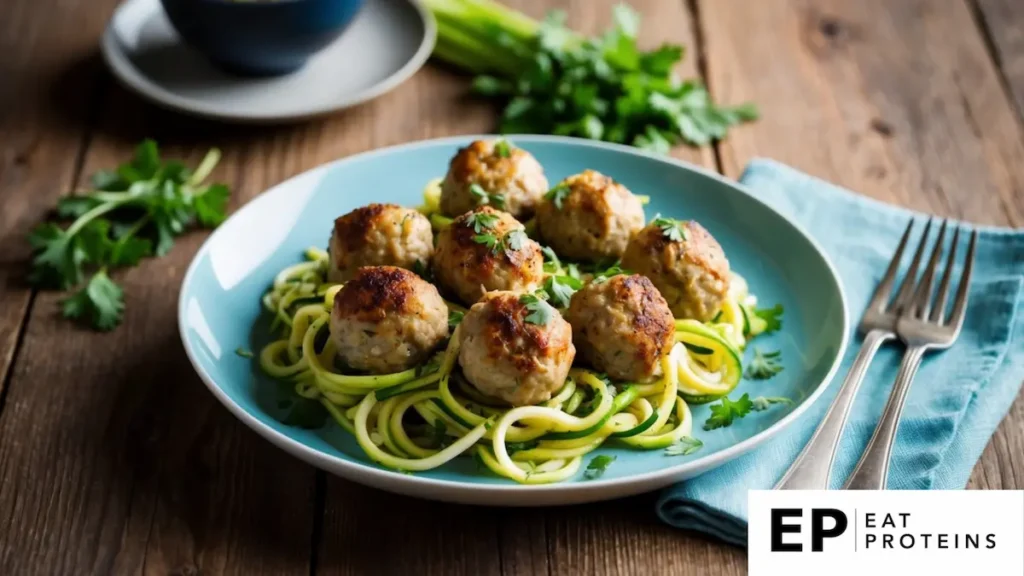
Turkey meatballs with zoodles are a tasty and healthy dish. Zoodles are noodles made from spiralized zucchini, which are low in calories and carbs. This recipe is easy to make and perfect for a bariatric diet.
To prepare, I start by mixing ground turkey with spices and herbs. I form the mixture into meatballs. Then, I bake them in the oven until they are cooked through.
For the zoodles, I spiralize zucchini and sauté them in a pan until tender. This usually takes about 3 to 5 minutes. I serve the meatballs on top of the zoodles with a light marinara sauce for added flavor.
Here are the steps:
- Preheat the oven to 400°F (200°C).
- Combine 1 pound of ground turkey, spices, and herbs in a bowl.
- Form into meatballs, about 1 inch in size.
- Bake meatballs for 20-25 minutes.
- Spiralize 2 medium zucchinis.
- Sauté zoodles in a pan for 3-5 minutes.
- Serve meatballs over zoodles with sauce.
This dish is filling and satisfying without being heavy, making it a great choice for anyone looking to eat healthier.
3. Beef and Broccoli Stir-Fry
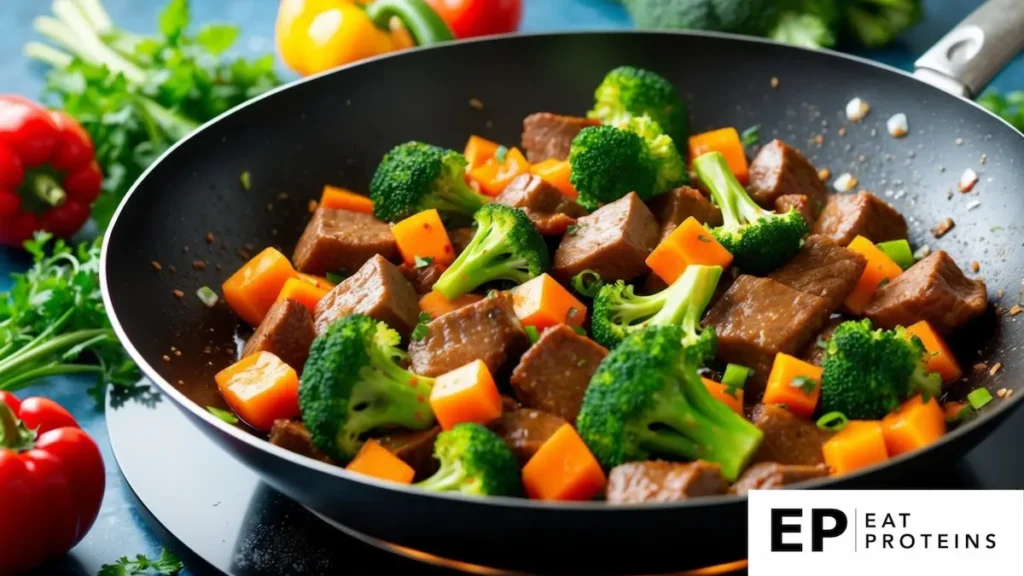
Beef and Broccoli Stir-Fry is a simple and healthy dish that fits well into a bariatric diet. This recipe is high in protein and filled with nutritious vegetables, making it a great option for meals.
Making this dish is easy. I start by slicing lean beef into thin strips and steaming fresh broccoli. The cooking process is quick, typically under 30 minutes.
Here’s how I prepare it:
- Heat a non-stick pan over medium heat.
- Add 1 tablespoon of low-sodium soy sauce and a splash of water.
- Cook the beef for about 5-7 minutes until browned.
- Add the steamed broccoli to the beef.
- Stir in another tablespoon of soy sauce and cook for 3-5 minutes.
This meal is not only quick but also delicious. It’s perfect for lunch or dinner and can be enjoyed on its own or with a small portion of brown rice if desired. I often make extra to have leftovers ready for busy days.
4. Baked Salmon with Asparagus
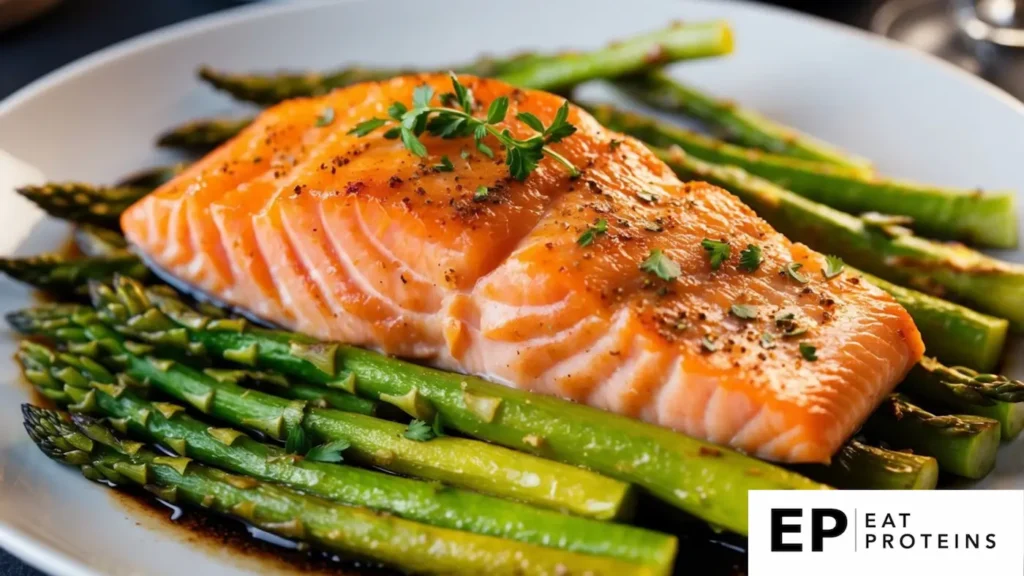
Baked salmon with asparagus is a nutritious dish that fits well into a bariatric diet. Salmon is rich in healthy fats and protein, while asparagus is low in calories and high in vitamins. This meal is simple to prepare and can be made quickly.
To make this dish, follow these steps:
- Preheat your oven to 400°F (200°C).
- Line a baking sheet with parchment paper or aluminum foil.
- Place salmon fillets on the sheet and season them with salt, pepper, and lemon juice.
- Trim the asparagus and arrange it around the salmon.
- Drizzle a little olive oil over the asparagus and season with salt.
- Bake in the oven for 12-15 minutes, or until the salmon flakes easily with a fork.
This recipe is easy to customize by adding herbs or spices of your choice. It’s a healthy option that’s flavorful and satisfying. Enjoy this meal as part of your balanced bariatric diet.
5. Greek Yogurt Parfait
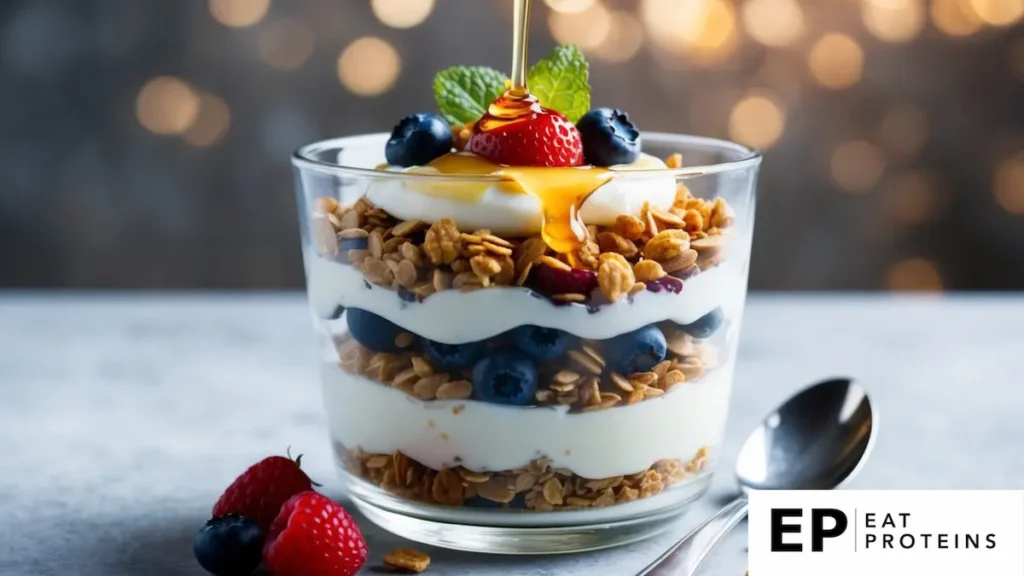
Greek yogurt parfait is a healthy and delicious option for a bariatric diet. It combines Greek yogurt, fruits, and a sprinkle of granola or nuts. This dish is loaded with protein, which is important for anyone after weight loss surgery.
Making a Greek yogurt parfait is easy and quick. It takes just a few minutes to prepare. Here are the steps:
- Choose your ingredients: I like to use plain Greek yogurt, fresh berries, and a small amount of granola.
- Layer the yogurt: In a bowl or glass, add a layer of Greek yogurt at the bottom.
- Add fruits: Next, I layer in my choice of fresh berries, like strawberries or blueberries.
- Add granola: For some crunch, I sprinkle a bit of granola on top.
- Repeat layers: I repeat the layers until I reach the top of my bowl or glass.
This parfait is not only tasty but also easy to customize. I can switch out fruits or toppings based on what I have on hand.
6. Bariatric Egg Muffins

Bariatric egg muffins are a convenient and healthy choice for those on a bariatric diet. These mini muffins are packed with protein and can be made with various ingredients to suit personal taste.
I find them easy to prepare. They are ideal for meal prep and can be stored in the fridge or freezer. Cooking time is quick, making them a feasible option for busy mornings.
Here’s how I make them:
- Preheat the oven to 350°F (175°C).
- Grease a muffin tin or use silicone liners.
- Whisk together 6 eggs with a splash of milk.
- Add in toppings like spinach, diced bell peppers, and cooked turkey bacon.
- Pour the egg mixture evenly into the muffin cups, filling each about ¾ full.
- Bake for 20-25 minutes or until the eggs are set.
I like to let them cool before removing them from the tin. These egg muffins are great for breakfast or a quick snack. Enjoy them warm or cold!
7. Quinoa and Black Bean Salad
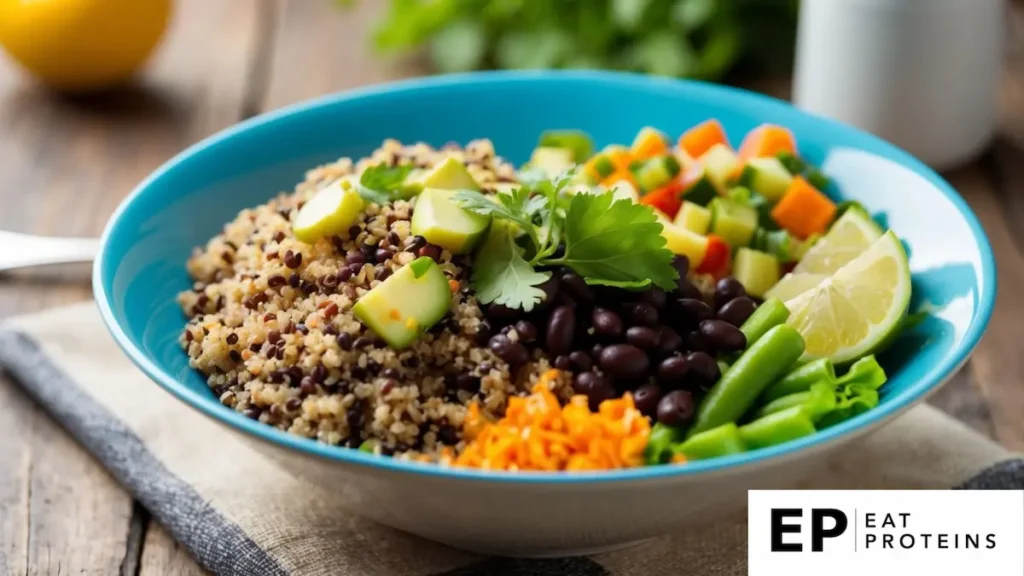
Quinoa and black bean salad is a nutritious and satisfying dish. Quinoa is a whole grain that is high in protein and fiber. Black beans add more protein and essential nutrients, making this salad a great option for a bariatric diet.
This salad is easy to make. It takes about 30 minutes from start to finish.
Here are the steps to prepare it:
- Rinse 1 cup of quinoa in cold water.
- Cook the quinoa in 2 cups of water. Bring it to a boil, then reduce heat and simmer for 15 minutes.
- In a bowl, combine the cooked quinoa, 1 can of drained black beans, and 1 diced bell pepper.
- Add juice from 1 lime, 2 tablespoons of olive oil, salt, and pepper to taste.
- Mix everything together and garnish with fresh cilantro or parsley.
This dish can be served warm or cold. It’s a versatile meal that can be enjoyed as a main dish or a side.
8. Lemon Garlic Shrimp
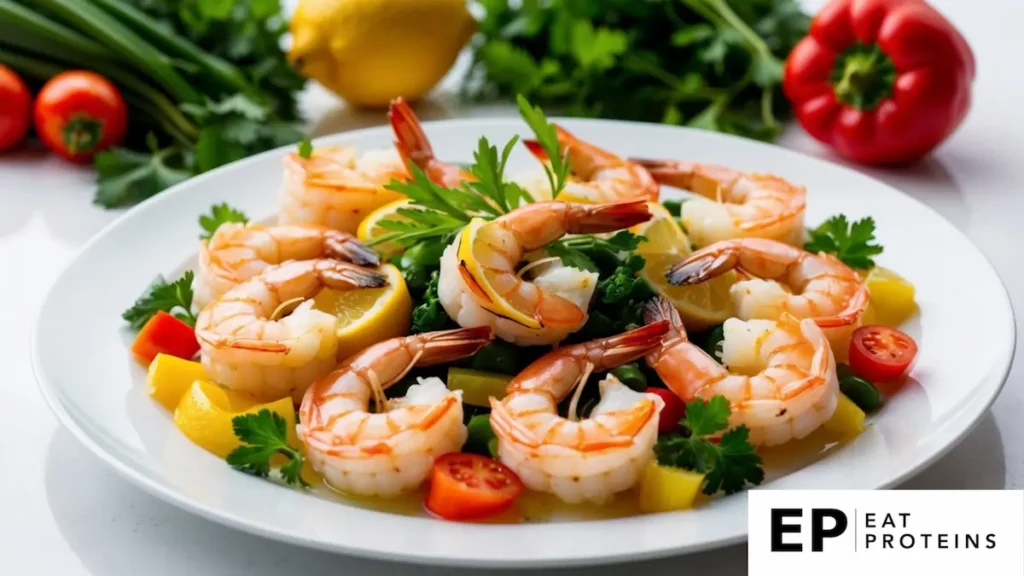
Lemon garlic shrimp is a dish that combines shrimp with fresh, zesty flavors. It’s light, nutritious, and fits well into a bariatric diet. Shrimp is high in protein and low in calories, making it a great choice.
I find this recipe easy to prepare. It typically takes about 15 minutes from start to finish. You’ll need key ingredients like shrimp, garlic, lemon juice, and olive oil.
Here are the steps to make lemon garlic shrimp:
- Prepare the Shrimp: Start with 1 pound of peeled and deveined shrimp.
- Cook the Garlic: In a skillet, heat 1 tablespoon of olive oil over medium heat. Add 2-3 minced garlic cloves and sauté for about 1 minute.
- Add the Shrimp: Place the shrimp in the skillet. Cook for 2-3 minutes on each side until they turn pink.
- Flavor with Lemon: Squeeze the juice of 1 lemon over the shrimp and stir. Cook for another minute.
- Serve: Enjoy the shrimp hot, garnished with parsley if desired.
This dish is not only quick but also satisfying and delicious.
9. Cauliflower Fried Rice
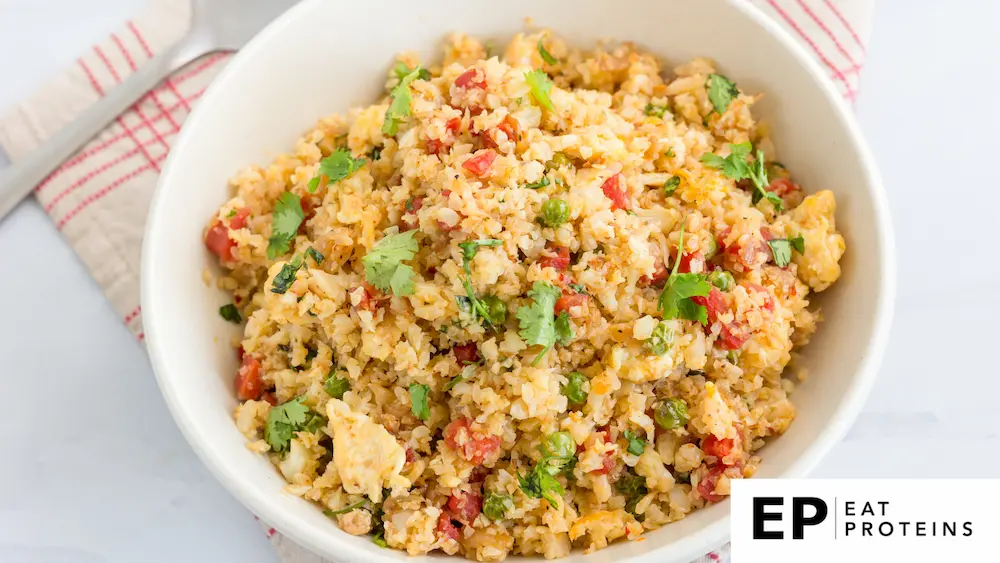
Cauliflower fried rice is a healthy, low-carb alternative to traditional fried rice. It offers the familiar flavors without the extra calories. This dish is packed with nutrients and is perfect for anyone on a bariatric diet.
Making cauliflower fried rice is simple. First, I chop a head of cauliflower into small pieces, resembling rice grains. This can also be done using a food processor for quicker results.
Here are the basic steps to prepare it:
- Heat a tablespoon of olive oil in a pan over medium heat.
- Add chopped cauliflower and cook for 5-7 minutes until tender.
- Stir in diced vegetables like carrots and peas, and cook for an additional 3-4 minutes.
- Push the mixture to one side, pour in a beaten egg, and scramble it.
- Mix everything together, adding soy sauce and pepper to taste.
This dish is not only easy to make but also customizable. I can add various vegetables or protein sources to suit my taste and nutritional needs. It’s a great way to enjoy a comforting meal while staying on track.
10. Stuffed Bell Peppers

Stuffed bell peppers are a healthy and satisfying dish for people on a bariatric diet. They are easy for me to make and can be filled with various nutritious ingredients.
To prepare stuffed bell peppers, I start by gathering the ingredients. I usually use lean ground meat, brown rice, diced vegetables, and a low-sugar sauce. The bell peppers serve as a tasty container.
Here are the steps I follow:
- Preheat my oven to 375°F (190°C).
- Cut the tops off the bell peppers and remove the seeds.
- In a pan, brown 1 pound of lean ground meat and add diced onions, garlic, and other veggies.
- Mix in 1 cup of cooked brown rice and 1 cup of low-sugar tomato sauce.
- Stuff each pepper with the mixture and place them in a baking dish.
- Bake for 25-30 minutes until the peppers are tender.
I enjoy stuffed bell peppers because they are flavorful, easy to make, and packed with protein and fiber, making them a great choice for my bariatric diet.
What is the Importance of a Bariatric Diet?

A bariatric diet is crucial for those who have undergone weight loss surgery. It helps in recovery and ensures long-term success. Following this diet can aid in achieving weight loss goals and improve overall health.
What are the Nutritional Requirements of a Bariatric Diet?
After bariatric surgery, nutritional needs change significantly. I focus on high-protein foods to support muscle healing and growth. Protein is essential for maintaining muscle mass and preventing malnutrition.
Patients should aim for at least 60-80 grams of protein daily. Foods like lean meats, fish, and beans are great choices. Additionally, I stress the importance of vitamins and minerals, especially B12, iron, and calcium. A balanced multivitamin can help cover these nutrient gaps.
Hydration is another key part of the diet. I recommend drinking plenty of water throughout the day, avoiding sugary beverages. This practice not only aids digestion but also helps manage hunger levels.
What are the Post-Surgery Dietary Phases of a Bariatric Diet?
The post-surgery diet consists of several phases, each serving a unique purpose. Each phase requires careful planning to support healing and adjust to new eating habits.
- Clear Liquid Phase (1-2 days):
- Focuses on hydration with broths, water, and clear juices.
- Full Liquid Phase (1-2 weeks):
- Incorporates protein shakes, smoothies, and thinned soups.
- Soft Food Phase (2-4 weeks):
- Includes soft foods like yogurt, mashed potatoes, and soft fruits.
- Regular Diet Phase (after 4 weeks):
- Introduces a wider variety of foods, focusing on high-protein options.
Each phase is essential for transitioning to solid foods while minimizing digestive issues. I always advise paying attention to portion sizes and eating slowly to recognize fullness.
What are the Key Ingredients for Bariatric Recipes?
When creating bariatric recipes, it’s essential to focus on specific ingredients that support a healthy lifestyle after surgery. I prioritize high-protein foods, low-carb options, and healthy fats to ensure balanced nutrition while keeping meals enjoyable.
What are High-Protein Foods in a Bariatric Diet?
Protein is crucial for healing and maintaining muscle mass after bariatric surgery. I often include foods such as chicken breast, turkey, fish, and eggs. Plant-based options like lentils, chickpeas, and quinoa are also excellent sources.
- Chicken Breast: Low in fat and high in protein, it’s easy to prepare in various ways.
- Fish: Varieties like salmon and tuna provide omega-3 fatty acids along with protein.
- Greek Yogurt: A great snack with both protein and probiotics that supports digestion.
When preparing meals, I aim for at least 60-80 grams of protein daily to meet my body’s needs.
What are Low-Carb Options for a Bariatric Diet?
Low-carb foods help manage blood sugar levels and contribute to weight loss. I choose vegetables that are low in starch and high in fiber.
- Leafy Greens: Spinach, kale, and lettuce are filling and nutritious.
- Cauliflower: A versatile substitute for rice and potatoes.
- Zucchini: This can be spiralized into “noodles” for a low-carb pasta alternative.
By focusing on these options, I create meals that are satisfying without excess carbohydrates, keeping my energy stable.
How to Include Healthy Fats in a Bariatric Diet?
Incorporating healthy fats is important for overall health, as fats help with nutrient absorption. I prefer sources that provide essential fatty acids.
- Avocado: Packed with fiber and heart-healthy fats, it can be added to salads or smoothies.
- Olive Oil: A great choice for cooking or dressing salads, it offers anti-inflammatory properties.
- Nuts and Seeds: Almonds, walnuts, and chia seeds add crunch and nutrition without excess calories.
I make sure to include these healthy fats in moderation, balancing them with proteins and carbohydrates for well-rounded meals.
How to Prepare Bariatric Meals Effectively?
Preparing meals after bariatric surgery requires careful planning and mindful choices. I focus on making nutritious meals that support long-term health and weight management. Here are some strategies that I find helpful.
What are Meal Prepping Tips for a Bariatric Diet?
I strongly recommend meal prepping to save time and ensure I have healthy options ready. I plan my meals weekly, selecting recipes that align with my dietary needs. It helps to cook in batches. For example, I might grill several chicken breasts or roast a few trays of vegetables.
Using clear containers allows me to store meals in individual portions. I label each container with the meal name and date to keep track. Having meals prepped makes it easier to avoid unhealthy choices when I’m busy or tired.
How to Practice Portion Control in a Bariatric Diet?
Portion control is crucial for me. I use smaller plates and bowls to help manage my serving sizes. My goal is to fill half my plate with vegetables, one-quarter with lean protein, and one-quarter with whole grains.
When I serve meals, I measure portions using a kitchen scale or measuring cups. This practice keeps me on track and prevents overeating. I also remind myself to eat slowly and stop when I feel satisfied, not stuffed.
How to Balance Nutrient Intake in a Bariatric Diet?
Balancing nutrients is essential for my health post-surgery. I focus on including protein in every meal because it aids in healing and keeps me full. Lean protein sources I use include chicken, fish, and legumes.
I also make sure to add plenty of fruits and vegetables for vitamins and minerals. Whole grains provide fiber, helping with digestion. Before each meal, I check that I have a good mix of protein, carbs, and healthy fats. Keeping a food journal helps me track what I eat and adjust as needed.
